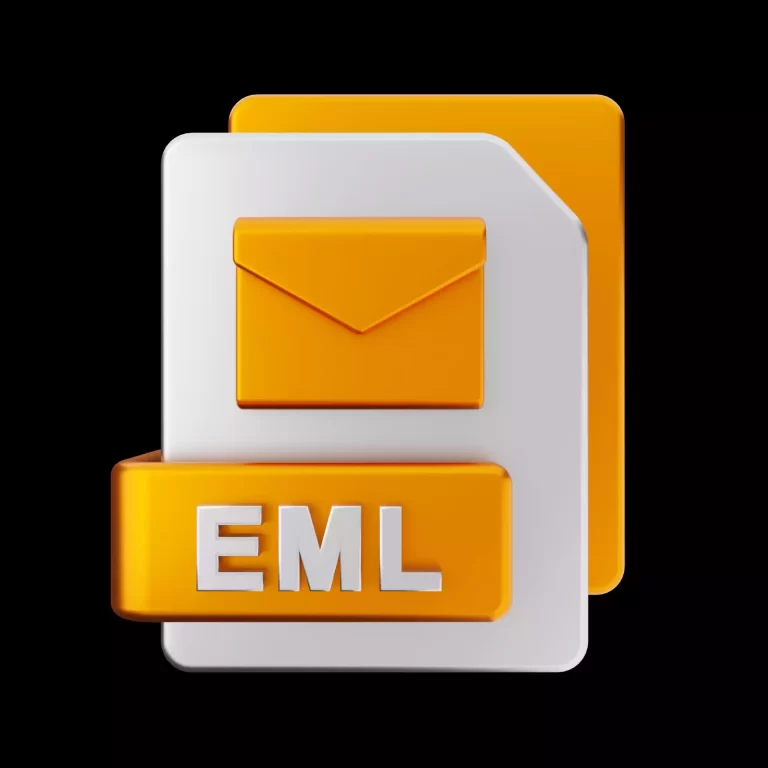.EML File Extension

E-Mail Message
| Developer | Microsoft |
| Popularity | |
| Category | Text Files |
| Format | .EML |
| Cross Platform | Update Soon |
What is an EML file?
The .EML file extension is associated with email messages. It stores an individual email message, including its content, metadata (such as sender, recipient, date, and subject), and attachments.
This file format enables the exchange and storage of emails, preserving their original formatting and content.
More Information.
Initially, .EML files were intended for local storage and sharing of emails. They were designed to retain the structure and content of an email message independently from the email client.
Over time, their utility expanded beyond local storage, becoming instrumental in email migration, backups, and data interchange between different email platforms.
Origin Of This File.
The .EML file format was initially introduced by Microsoft Outlook Express, an email client included in earlier versions of the Windows operating system.
However, it has become a widely accepted standard across various email applications and platforms.
File Structure Technical Specification.
.EML files adhere to the MIME (Multipurpose Internet Mail Extensions) standard. They are essentially plain text files with a specific structure comprising headers and body parts.
The headers contain crucial metadata like sender, recipient, subject, date, and MIME version, while the body parts include the message content, attachments, and formatting information.
How to Convert the File?
Certainly! Here’s a breakdown on how to convert .EML files on various platforms:
Windows:
Using Outlook:
- Open Outlook: Launch Microsoft Outlook.
- Import EML: Go to “File” > “Open & Export” > “Import/Export.”
- Choose File Type: Select “Import from another program or file” and click “Next.”
- Select EML: Choose “Outlook Data File (.pst)” and follow the prompts to import the .EML file.
Using Third-Party Tools:
- Download Software: Get third-party conversion software like Total Outlook Converter or SysTools EML Converter.
- Install and Convert: Install the software, follow the instructions to import and convert the .EML file.
Linux:
Using Thunderbird:
- Install Thunderbird: Download and install Mozilla Thunderbird.
- Import EML: Open Thunderbird, go to “Tools” > “Import” > “Mail” and select “Import directly one or more .EML files” to import and view .EML files.
Using Command Line:
- Install Email Clients: Install command-line email clients like Mutt or Alpine.
- Convert Using Commands: Use command-line tools or scripting to convert .EML files to other formats like mbox or plain text.
Mac:
Using Apple Mail:
- Open Apple Mail: Launch the Apple Mail application.
- Drag and Drop: Drag the .EML file into the Apple Mail interface to view or convert it.
Using Third-Party Apps:
- Download Third-Party Apps: Get third-party apps like Emailchemy or EML Viewer for Mac.
- Open and Convert: Install the app, then open and follow the instructions to convert .EML files.
Android:
Using Email Apps:
- Install Email Client: Download and install an email client app that supports .EML files, like K-9 Mail or BlueMail.
- View EML File: Open the email client, and the .EML file should be viewable directly or as an attachment.
iOS:
Using Email Apps:
- Install Email App: Download and install an email app supporting .EML files, such as Apple Mail, Spark, or Edison Mail.
- Open EML File: Open the email app, and the .EML file should be viewable directly or as an attachment.
Advantages And Disadvantages.
Advantages:
- Portability: .EML files are easily portable across various email clients and platforms.
- Transparency: They preserve the original email structure, ensuring fidelity during transfers.
- Archiving: Ideal for archiving individual emails or entire conversations.
Disadvantages:
- Lack of Encryption: .EML files generally lack encryption, potentially compromising sensitive data.
- Compatibility Issues: Some email clients may not fully support all features within .EML files, leading to discrepancies in rendering.
How to Open EML?
Open In Windows
Use default applications like Outlook, or third-party tools like Thunderbird or Mailbird.
Open In Linux
Tools like Thunderbird or Evolution are popular choices for viewing .EML files on Linux systems.
Open In MAC
Apple Mail or third-party apps like Thunderbird can be used to access .EML files on Mac.
Open In Android
Utilize email client apps like K-9 Mail or BlueMail that support .EML file viewing.
Open In IOS
iOS email apps like Apple Mail or third-party apps that support .EML files, such as Spark or Edison Mail.
Open in Others
Some web-based email services like Gmail or Outlook.com allow viewing .EML files by uploading them as attachments.













